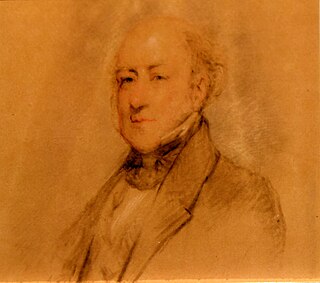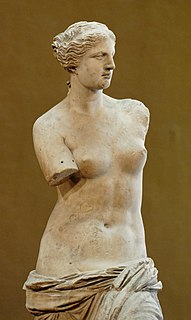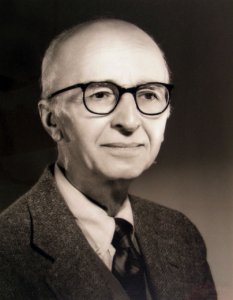Related Research Articles
Film theory is a set of scholarly approaches within the academic discipline of film or cinema studies that began in the 1920s by questioning the formal essential attributes of motion pictures; and that now provides conceptual frameworks for understanding film's relationship to reality, the other arts, individual viewers, and society at large. Film theory is not to be confused with general film criticism, or film history, though these three disciplines interrelate.

Umberto Eco was an Italian medievalist, philosopher, semiotician, novelist, cultural critic, and political and social commentator. In English, he is best known for his popular 1980 novel The Name of the Rose, a historical mystery combining semiotics in fiction with biblical analysis, medieval studies and literary theory, as well as Foucault's Pendulum, his 1988 novel which touches on similar themes.

Victor Burgin is a British artist and writer. Burgin first came to attention as a conceptual artist in the late 1960s and at that time was most noted for being a political photographer of the left, who would fuse photographs and words in the same picture. He has worked with photography and film, calling painting "the anachronistic daubing of woven fabrics with coloured mud". His work is influenced by a variety of theorists and philosophers, most especially thinkers such as Sigmund Freud, Henri Lefebvre, André Breton, Maurice Merleau-Ponty, Michel Foucault and Roland Barthes.

Stephen Jay Greenblatt is an American Shakespearean, literary historian, and author. He has served as the John Cogan University Professor of the Humanities at Harvard University since 2000. Greenblatt is the general editor of The Norton Shakespeare (2015) and the general editor and a contributor to The Norton Anthology of English Literature.

Meyer Schapiro was a Lithuanian-born American art historian known for developing new art historical methodologies that incorporated an interdisciplinary approach to the study of works of art. An expert on early Christian, Medieval, and Modern art, Schapiro explored art historical periods and movements with a keen eye towards the social, political, and the material construction of art works.
Biosemiotics is a field of semiotics and biology that studies the prelinguistic meaning-making, biological interpretation processes, production of signs and codes and communication processes in the biological realm.

Felix Joseph Slade was an English lawyer and collector of glass, books and prints.
René Wellek was a Czech-American comparative literary critic. Like Erich Auerbach, Wellek was an eminent product of the Central European philological tradition and was known as a vastly erudite and "fair-minded critic of critics."
The Slade Professorship of Fine Art is the oldest professorship of art and art history at the universities of Cambridge, Oxford and University College, London.
Sir John Newenham Summerson was one of the leading British architectural historians of the 20th century.
Amelia Jones originally from Durham, North Carolina is an American art historian, art theorist, art critic, author, professor and curator. Her research specialisms include feminist art, body art, performance art, video art, identity politics, and New York Dada. Jones's earliest work established her as a feminist scholar and curator, including through a pioneering exhibition and publication concerning the art of Judy Chicago; later, she broadened her focus on other social activist topics including race, class and identity politics. Jones has contributed significantly to the study of art and performance as a teacher, researcher, and activist.
Leo Braudy is University Professor and Professor of English at the University of Southern California, where he teaches 17th- and 18th-century English literature, film history and criticism, and American culture. He has previously taught at Yale, Columbia, and Johns Hopkins University. He is best known for his cultural studies scholarship on celebrity, masculinity, and film, and is frequently sought after for interviews on popular culture, Hollywood cinema, and the American zeitgeist of the 1950s.
James Sloss Ackerman was an American architectural historian, a major scholar of Michelangelo's architecture, of Palladio and of Italian Renaissance architectural theory.

Art history is the study of aesthetic objects and visual expression in historical and stylistic context. Traditionally, the discipline of art history emphasized painting, drawing, sculpture, architecture, ceramics and decorative arts; yet today, art history examines broader aspects of visual culture, including the various visual and conceptual outcomes related to an ever-evolving definition of art. Art history encompasses the study of objects created by different cultures around the world and throughout history that convey meaning, importance or serve usefulness primarily through visual representations.

The history of art criticism, as part of art history, is the study of objects of art in their historical development and stylistic contexts, i.e. genre, design, format, and style, which include aesthetic considerations. This includes the "major" arts of painting, sculpture, and architecture as well as the "minor" arts of ceramics, furniture, and other decorative objects.
Charles Townsend Harrison, BA Hons (Cantab), MA (Cantab), PhD (London) was a UK art historian who taught Art History for many years and was Emeritus Professor of History and Theory of Art at the Open University. Although he denied being an artist himself, he was a full participant and catalyst in the Art and Language group.
Peter John Murray was a British art historian and the Professor of History of Art at Birkbeck College, London from 1967 to 1980. Together with his wife, Linda Murray, he wrote primers on Italian Renaissance art which have been used by generations of students. In 1959 they published the highly successful Penguin Dictionary of Art and Artists, which was frequently updated and reissued. In 1963, they published two substantial introductory texts The Art of the Renaissance, and a book that became a classic primer The Architecture of the Renaissance.

An architectural style is a set of characteristics and features that make a building or other structure notable or historically identifiable. It is a sub-class of style in the visual arts generally, and most styles in architecture relate closely to a wider contemporary artistic style. A style may include such elements as form, method of construction, building materials, and regional character. Most architecture can be classified within a chronology of styles which changes over time, reflecting changing fashions, beliefs and religions, or the emergence of new ideas, technology, or materials which make new styles possible.
Josephine Dawn Adès,, also known as Dawn Adès, is a British art historian and academic. She is professor emeritus of art history and theory at the University of Essex.

Jean Victor Edmond Paul Marie Bony was a French medieval architectural historian specialising in Gothic architecture. He was Slade Professor of Fine Art at the University of Cambridge from 1958 to 1961, Fellow of St John's College, Cambridge, and Professor of Art at the University of California at Berkeley, from 1962 to 1980.